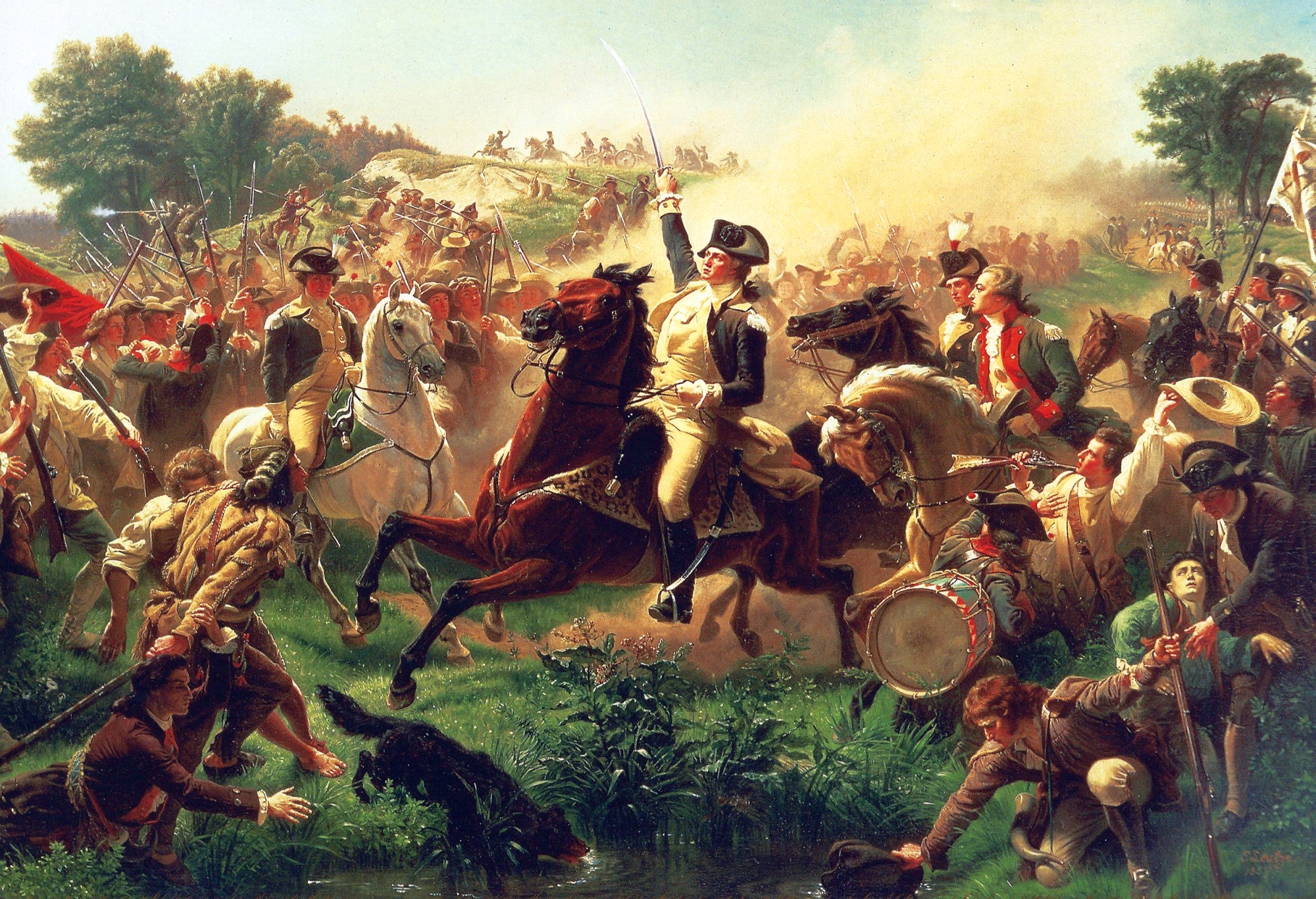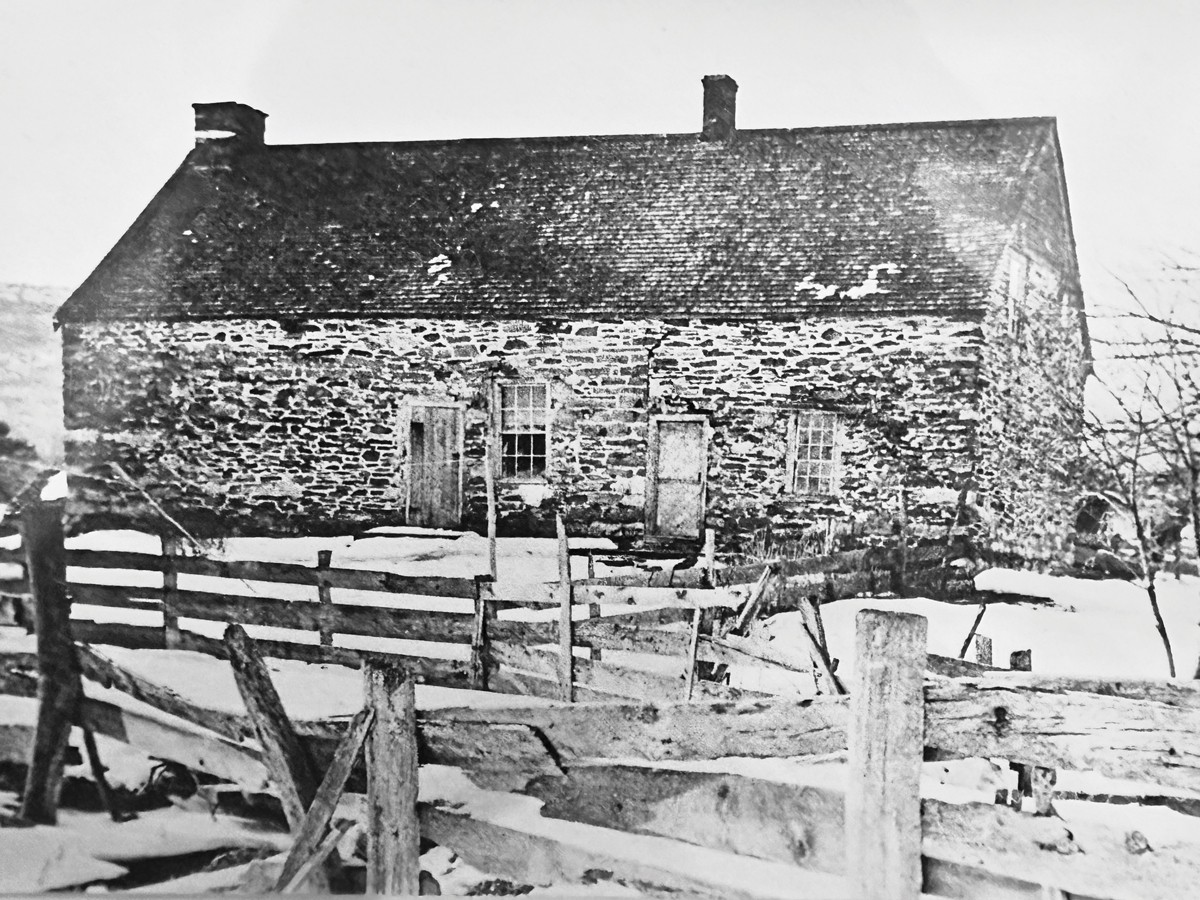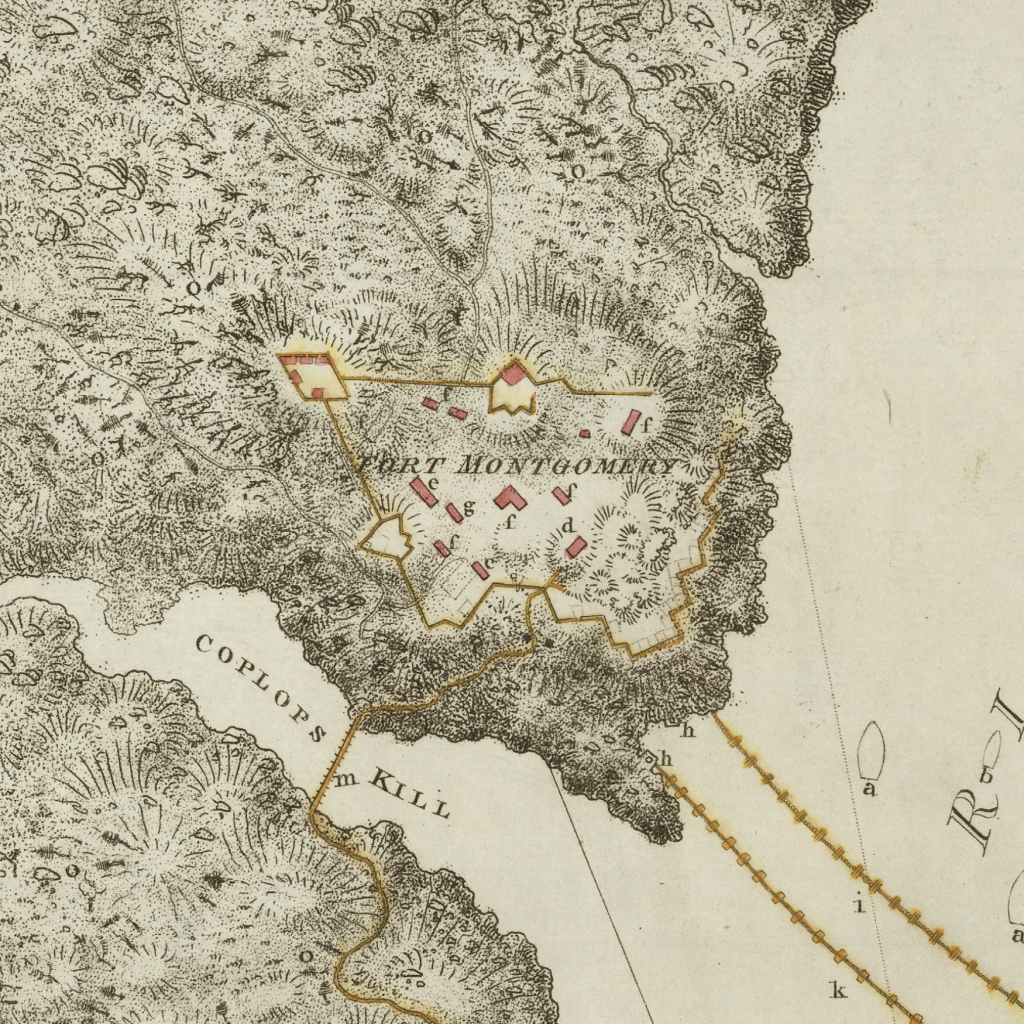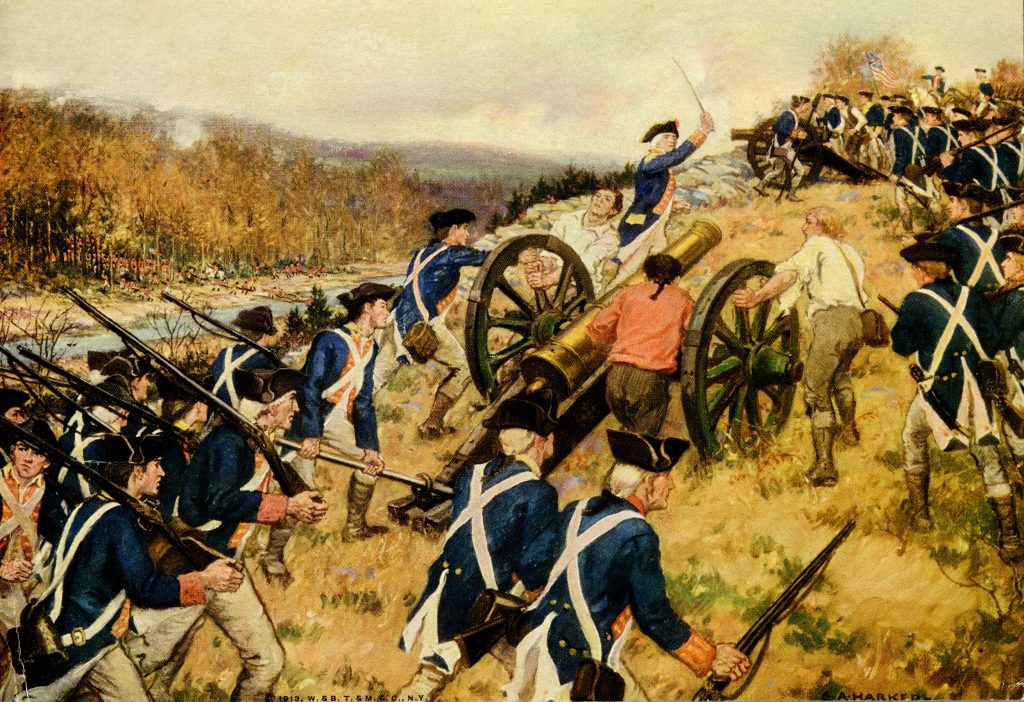
The Constable family has a long history of service in the armed forces.
The earliest record of our military service comes in 1687: Gerrit Egbertsen, the first of our ancestors in America, was listed as a member of the militia at Kingston, New York.
Following in his father Gerrit’s footsteps, Egbert Constapel served in the Ulster County militia throughout the early 1700s. And four of Egbert’s sons — Gerrit, Hendrick, Johannes and Abraham — are recorded as serving in the Ulster County militia into the mid-1700s.
Thus, it comes as no surprise that four of our Constable ancestors fought for the Patriot cause during the American Revolution:
- Garret Constable of Hurley
- William Constable of Hurley
- Christopher Constable of Montgomery
- John Constable of Marbletown
Garret primarily fought in the Continental Army while William, Christopher and John fought in the New York State militia.
The militiamen in Ulster County were largely responsible for scouting and patrolling for signs of British activity. They reinforced the Continental Army as needed in certain battles, and were tasked with protecting the vast farm lands of the Hudson Valley, a critical “bread basket” for the Patriots.
In addition to the Constables who fought, Hendrick Constable of Hurley served as a member of the Ulster County Committee of Safety, an emergency wartime governing body created at the outset of the Revolution.
Garret Constable
Resident of Hurley, New York. Born in 1754 to Willem Constapel and Rachel Roosa.
Of the Constables who fought in the Revolutionary War, Garret served the longest and had the most exhilarating service record.
The Revolutionary War began on April 19, 1775, with the Battles of Lexington and Concord. By June, the Continental Congress called for the creation of a “Continental Army” under the command of Gen. George Washington.
On July 14, 1775, Garret responded to the call and enlisted as a private in the New York Line of Continental Army. He was about 20 years old.
Assigned to the 3rd Regiment, he fought in the invasion of Canada in 1775, the first military campaign of the Patriot army. Garret was initially based at Fort Ticonderoga just months after its capture by Ethan Allen and the Green Mountain Boys. He marched north from there to fight at the Siege of Fort St. John in September, an early victory that cleared the way for the capture of Montreal in November.
He also likely fought at the Battle of Quebec in December, a devastating defeat for the Americans.
Garret and his regiment arrived outside of Quebec on December 1 with a critical deadline looming — Garret’s term of service in the Continental Army, like many others, was set to expire on December 31.
General Richard Montgomery, who was in command, had little choice but to act before the end of the month if Quebec was to be captured. He believed his only chance was to attack at night in the middle of a snowstorm, when his men could saw through the city’s wooden palisades undetected.
A Nor’easter swept in on December 30 and Montgomery ordered the attack, which commenced early morning on New Year’s Eve, 1775. They breached palisade, but Montgomery was shot and killed soon after entering the city. The remaining forces retreated amid low visibility, heavy gunfire and mounting casualties.
By the morning of Jan. 1, 1776, the American forces at Quebec had been halved — from 1,200 to 600 men — because of expiring enlistments and deaths in the previous day’s failed assault.
It is unknown whether Garret re-enlisted in 1776, as records were not kept for his regiment. He does not appear in any records for 1777.
Garret returned to the Continental Army in May 1778, joining New York’s 2nd Regiment under Col. Philip Van Cortlandt. Upon reenlistment, he traveled to join his company at Valley Forge, where they were encamped with Gen. Washington and the rest of the Continental Army.
While it had been a difficult winter at Valley Forge, the Continental Army was reinvigorated after France agreed in February to provide military support to the United States. This forced the British to adopt a more defensive strategy. In turn, they decided to evacuate Philadelphia and retreat to New York City in June 1778.
Gen. Washington’s forces pursued. Garret and the rest of the Continental Army marched from Valley Forge to New Jersey to intercept the British before they reached the coast.
The chase culminated in the Battle of Monmouth, the longest one-day battle in the Revolution. Garret recalled that he “discharged 12 rounds” during the engagement.
Bernardus Swartwout, an ensign in Garret’s company, wrote about the battle in his diary:
We drew rum & provisions, were ordered to march not having time to prepare our provisions for eating. Left our baggage of every kind behind, also the soldiers coats. At 9 o’clock AM fell in with the enemy at, or near Monmouth Courthouse; we immediately formed in a field and a few cannon shots were exchanged. We not being posted in an advantageous position as Gen. Lee thought, were ordered to recross a defile or morass in our rear and form again in a wood. Remained there an hour. The Enemy advanced. Gen. Lee gave us orders to retreat (to the parties dissatisfaction) from an advantageous piece of ground. We retired in great haste but in good order. The enemy pressed hard on our rear. After retreating two miles was met by Gen. Washington who was amazed to find us retreating. He ordered us to halt, form on a hill immediately in our front and face the enemy, accordingly did so, with alacrity, on good piece of ground. The enemy had been advancing on us very fast, cutting our rear to pieces. We commenced a smart cannonade upon them, with compliment they returned. Heavy firing was produced. The enemy endeavored to gain our left wing, but the reception they met with confused them to such a degree that they broke their ranks and fell back. They formed and again came up, but were repulsed and made a precipitate retreat. We pursued them with charged bayonet. They made a short stand. The line came to a shoulder and a heavy fire of Musketry commenced together with charging bayonets. Again they were obliged to sound the retreat. We pursued them some distance but night approached fast. We were compelled to relinquish the chase. Returned up the hill from whence we cannonaded. Lay still about two hours, then marched towards the enemy one mile, then counter marched back to the aforesaid hill again, where we laid down under the blue skies this night. Both armies suffered severely from the excessive heat.
“Bernardus Swartwout Papers,” New York Historical Society
After the Battle of Monmouth, Garret became sick with an unspecified illness and spent three months away from his company. He may have been suffering from the effects of a heat-related illness, as both sides faced significant casualties from the extreme heat. He rejoined the regiment by October 1778.
Garret was honorably discharged from the Continental Army on Feb. 16, 1779, and chose to serve in the New York State militia for the remainder of the year.
In July 1780, he enlisted in the 4th Regiment. They spent most of the year patrolling the Hudson Highlands, but in October they were ordered to garrison Fort Stanwix in Rome, New York, arriving on November 22. Garret spent a little over four weeks at the fort before being discharged on December 15. At the end of the year, the 4th Regiment was eliminated and consolidated into the 2nd Regiment.
In 1781, Garret again served in the New York State militia and was promoted to the rank of sergeant. In the final months of the war, he served as a sergeant in the New York State levies under his former commander in the 4th Regiment, Lt. Col. Frederick von Weissenfels.
Garret was awarded a federal pension in 1818 for his service during the war.
His full enlistment record is below:
- Private in New York Line, 3rd Regiment (Col. Clinton) in 1775
- Private in New York Line, 2nd Regiment (Col. Van Cortlandt) in 1778
- Private in New York State Militia, Col. Cantine’s Regiment in 1779
- Private in New York Line, 4th Regiment (Lt. Col. Weissenfels) in 1780
- Sergeant in New York State Militia, Col. Pawling’s Regiment in 1781
- Sergeant in New York State Levies, Lt. Col. Weissenfels’ Regiment in 1781 and 1782
William Constable
Resident of Hurley, New York. Born in 1762 to Willem Constapel and Rachel Roosa.

William was the youngest Constable to fight in the Revolutionary War, and the only one known to have been wounded in battle. He was also Garret’s younger brother.
In 1779, William enlisted as a private in Pawling’s Regiment at about 17 years old. During this time, he was stationed in the Catskill Mountains at Shandaken to “garrison the forts and guard that frontier,” and was “employed much of the time scouting for Indians and Tories.”
During one scouting mission, William was caught in a surprise attack.
William and five other men were on patrol when a “party of Indians and Tories” opened fire. Two of the men in his company retreated to the fort, while William and three others stayed to provide cover fire. They managed to kill “four Indians and two Tories,” but William was injured and another man in his company was killed in the skirmish.
Despite the injury, he remained in the service and fulfilled the nine months of his term.
In 1780, William again served as a private in Pawling’s Regiment, this time stationed in Woodstock for an eight-month term. His regiment built a fort in the town, which it then garrisoned, and continued to scout the area.
William’s final term was in 1781, as a private in Weissenfels’ Regiment stationed at Wawarsing. By this time, the British were conducting raids in an attempt to destabilize areas controlled by the Patriots. The Hudson Valley was a key target.
On Aug. 12, 1781, a band of 300 Iroquois and 90 of John Butler’s loyalist raiders launched an attack on Wawarsing. They burned the village, and indiscriminately killed men, women and children.
William writes of the attack:
Was there when Wawarsink was burnt by the Indians and Tories, and went with Lieut. DeWitt in pursuit of them the next morning, on which occasion this declarant acted as guide to the party and by taking a cross route got ahead of the enemy and lay in ambush and when they came up, routed them and killed fifty six of them, almost their whole party.
William Constable, in his 1832 military service pension testimony
He was discharged in Kingston at the end of his nine-month term, which was effectively at the end of the war. British General Charles Cornwallis had surrendered to Washington at Yorktown in October 1781.
William was awarded a federal pension in 1832 for his service during the war.
Christopher Constable
Resident of Montgomery, New York. Born in 1745 to Benjamin Constapel and Margariet Maul.

Christopher — or Chris, as he was recorded on one document — served in the militia for at least two terms during the Revolutionary War.
Christopher was a sergeant in Hasbrouck’s Regiment of the New York State militia in 1777. He was about 32 years old and was stationed at Fort Montgomery during this time.
In late September 1777, General George Clinton ordered that half of Hasbrouck’s Regiment be moved to Kingston in anticipation of a British assault on the Hudson Valley.
It is unclear whether Christopher stayed at Fort Montgomery or marched to Kingston, but either path would have been grim.
The British attacked and destroyed Fort Montgomery on October 6. The ruins of the fort are still preserved today as part of a state park. They advanced north and eventually reached Kingston on October 16, burning the city to the ground.
Thus, Christopher either witnessed the destruction of Fort Montgomery or the burning of Kingston during his time in Hasbrouck’s Regiment.
These events were not in vain, however. The advancing British forces were attempting to rendezvous in the north with General John Burgoyne. The destruction of Forts Clinton and Montgomery, as well as the burning of Kingston bought the Continental Army enough time to surround Burgoyne’s troops at Saratoga. He surrendered on October 17.
This is often cited as the turning point in the war, as Burgoyne’s surrender ultimately convinced the French to enter the conflict in the spring of 1778.
Christopher later served in Cantine’s Regiment at an unknown date between 1778 and 1782.
John Constable
Resident of Marbletown, New York. Born in 1742 to Abraham Constapel and Henrickje Brink.

John served in the militia for at least two terms during the Revolution.
In the summer of 1776, he enlisted as a private in Pawling’s Regiment at 34 years old. The regiment was dispatched in October to provide assistance at the Battle of White Plains, where Gen. George Washington and his men were in retreat after losing control of New York City to the British.
Washington and his men were able to escape British General William Howe’s forces at White Plains and eventually cross the Hudson River at Peekskill.
John was later promoted to the rank of sergeant at an unknown date between 1778 and 1782.
Hendrick Constable
Resident of Hurley, New York. Born in 1728 to Gerrit Constapel and Margrietje Van Vliet.

Hendrick is the only Constable known to have served in a governmental role during the Revolutionary War.
At the outset of the American Revolution, the Continental Congress urged every state to create a “Committee of Safety” to serve as a wartime governing body, as none of the states had yet enacted constitutions or held elections for public office.
In New York, the Committee of Safety (later known as the Council of Safety) created “subcommittees” in every county to better address local needs during the war.
Hendrick, who about 47 years old in 1775, was a member of the Ulster County Committee. That meant he spent the early years of the Revolutionary War working to raise money to pay local militiamen and citizens alike for their assistance in the wartime efforts.
In Ulster County, these tasks included transporting prisoners, delivering gunpowder to troops, carrying mail and repairing the county prison.
The committee was also tasked with suppressing loyalists, known as Tories.
New York Heritage shares the details of one such case that came before the Ulster County Committee in 1776:
While no Revolutionary War battles took place in the village of New Paltz, the fight against the British drastically altered the life of one person: Roelof Josiah Eltinge. Eltinge was born in New Paltz on January 7, 1737. He married Maria Louq in 1760 and fathered eleven children.
His troubles began in 1776, when he refused to accept Continental currency in his storefront at the house we now call Bevier-Elting. According to resolutions passed by the New York Provincial Congress in 1775, those who refused currency issued by either the Continental or Provincial Congress were to be imprisoned and treated as enemies. Eltinge was thus brought before the Ulster County Committee of Safety (charged by the Provincial Congress with suppressing Tories), which imprisoned and then exiled him from Ulster County until the end of the war in 1783.
New York Heritage, “Provincial Exile: Roelof J. Eltinge’s Banishment from the Paltz”
The committee was dissolved in 1778 when the statewide Council of Safety was replaced by the newly formed New York state government.